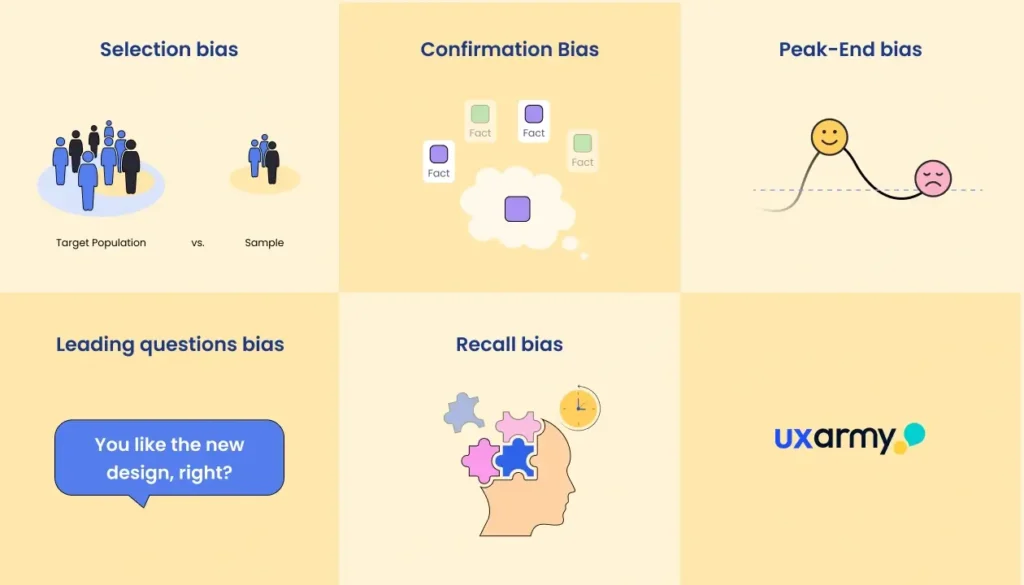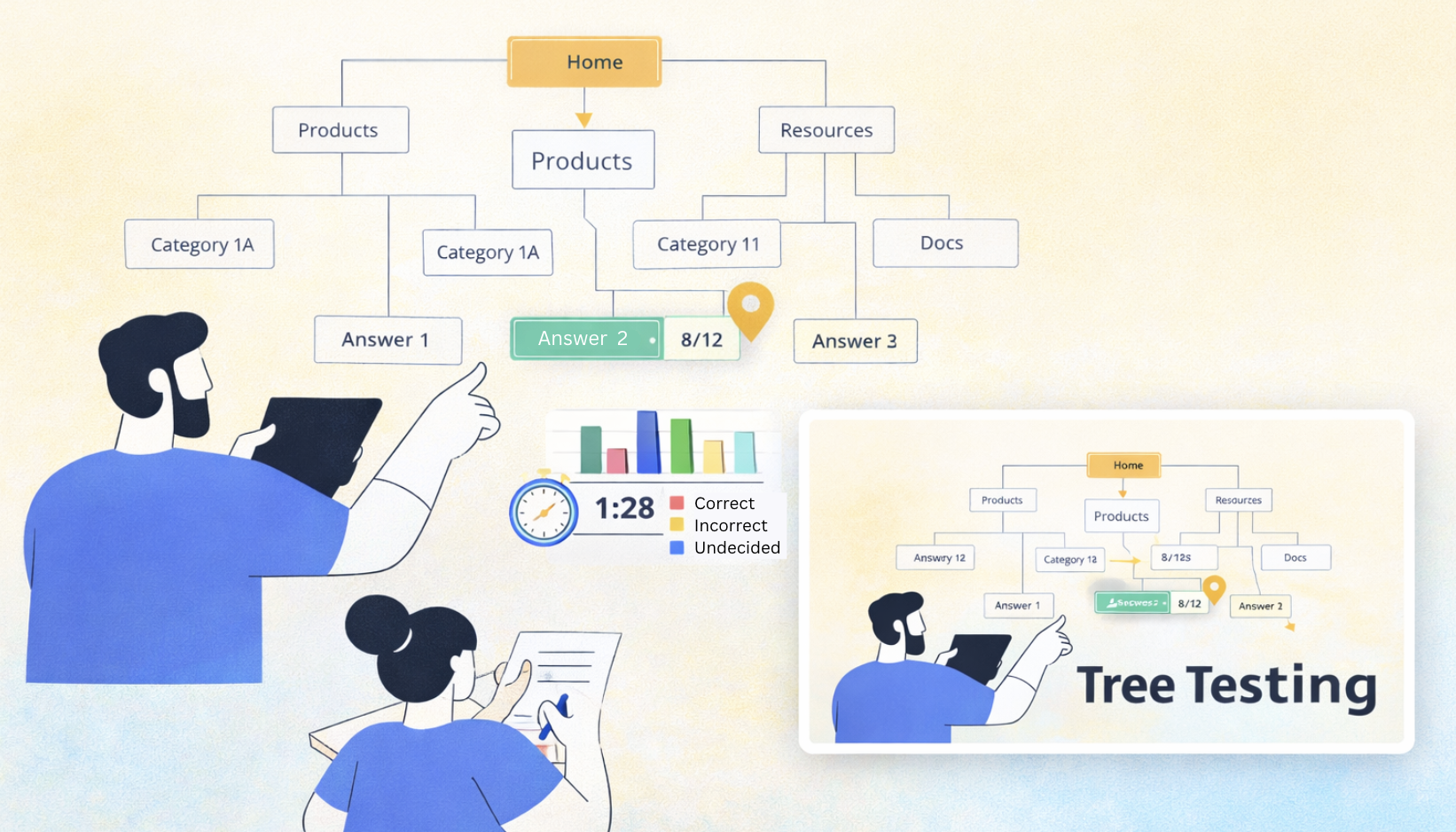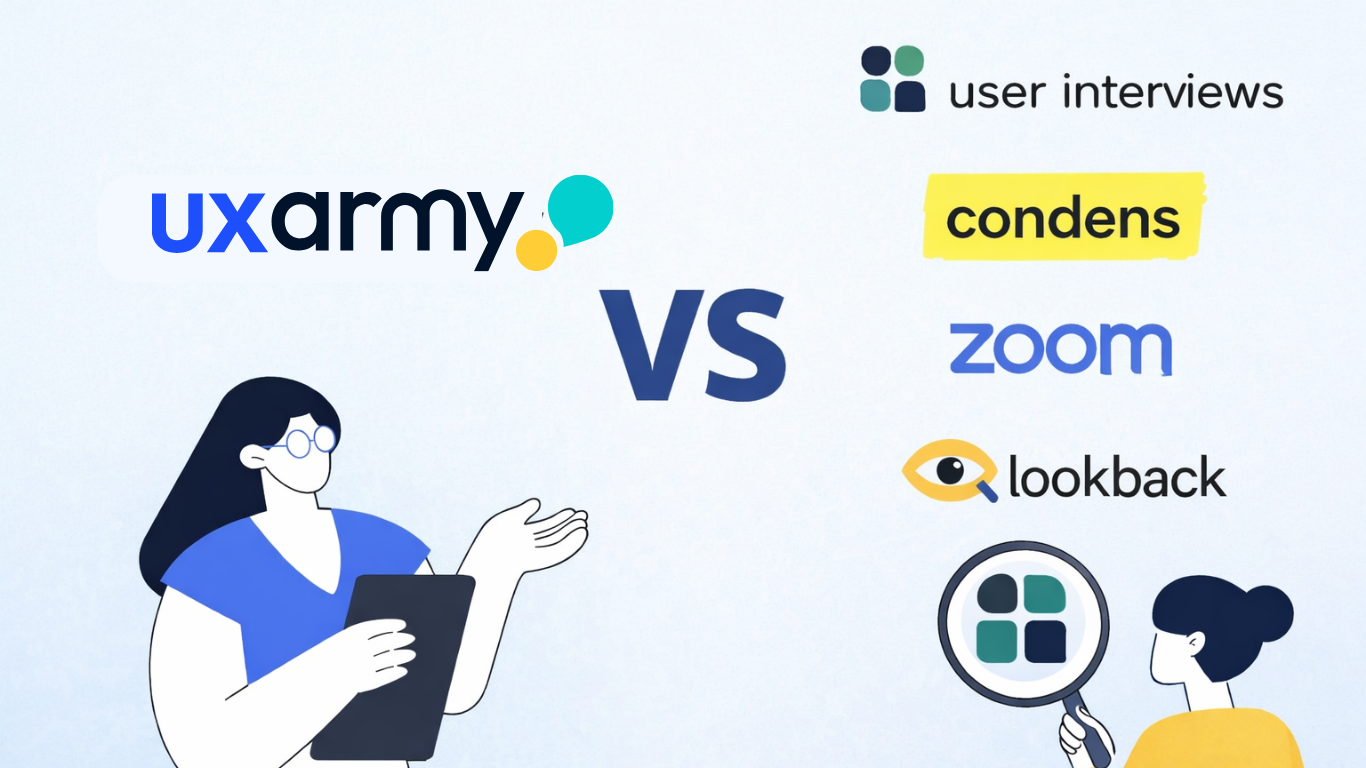Bias is natural to humans – it edges in how we see the world without us even realizing it. No one is completely free from it, be it scientists or even researchers who pride themselves on objectivity. Bias is shaped by our experiences, assumptions, and the environment we live in. But if we want to seek the truth, we’ve got to face this reality head-on.
Imagine walking into a research session already believing that a new design “works better.” Chances are, you’ll unconsciously steer the study to confirm that belief. Unfortunately, bias can mislead your research and result in decisions that don’t truly serve your users.
Having conducted user research for various projects, I’ve seen how unchecked biases can distort insights, leaving teams chasing solutions to non-existent problems. I further list and detail out the through steps on how to recognize and tackle biases, so you can uncover genuine user needs and make better product decisions.
let’s make trust the foundation of every project you work on.Ready to build that trust and kickstart your research?

Recognizing the Different Types of Bias in User Research

“Bias doesn’t just make us human, it makes us unreliable. Recognizing it is the first step toward conducting meaningful, objective research.”–Erika Hall, Just Enough Research
Bias refers to a prejudice that affects our ability to remain neutral and objective. It often gets in the way of research because we bring our beliefs, experiences, and cultural perspectives into the process. For instance, if you’ve been closely involved in the development of a product, you might unconsciously guide your research to affirm its strengths rather than explore its weaknesses.
A common instance of bias is when designers and product managers create a feedback overtone that affirms their opinions about the design and disregard other useful feedback they regard as less important or an outlier.
Recognizing bias isn’t just about spotting errors, it’s about identifying where your research findings might be unintentionally skewed.
The first step to eliminating bias is knowing what to look out for. Here are some common biases seen in user research:
1. Selection Bias
Selection bias occurs when the sample of participants in a study or research is not representative of the broader target population. This happens when certain groups are overrepresented or underrepresented in the sample, leading to results that are skewed or not generalizable.
When selection bias is present, the findings may fail to capture the diversity of user experiences, leading to misleading conclusions about what works for the overall user base.
Imagine you’re designing an app for a country but only test it with users from your local city. For instance, while users in your local city might love a minimalistic design, others in less modern cities might find it aesthetically bland. This mismatch can result in lower than expected adoption rates.
2. Confirmation Bias
Confirmation bias refers to the tendency to favor information that confirms one’s pre-existing beliefs or hypotheses, while giving less weight to evidence that contradicts them.
In user research, this bias manifests when researchers or designers inadvertently prioritize feedback that supports their assumptions about a product or design, while ignoring or dismissing critical feedback. This can result in a distorted understanding of user needs and product performance.
Imagine you’re conducting user research to assess the popularity and usability of Spotify’s new playlist feature. You’ve been using Spotify for years and have always loved it. Because of this, you believe the new feature will be a hit with users.
During the research, some participants expressed frustration with the feature, saying they find it confusing and difficult to navigate. However, you also receive feedback from other participants who love the feature.
“In user research, the goal is not just to prove your assumptions right but to test your hypotheses with an open mind, ensuring you truly understand the user’s needs”–Tomer Sharon, User Researcher
Instead of presenting the full spectrum of feedback, you focus on the positive comments, highlighting how the new feature enhances user experience. This is an example of confirmation bias, where you’re selectively presenting the findings that align with your pre-existing belief that the feature is great, while ignoring or minimizing the feedback that contradicts it.
The article “Considering Confirmation Bias in Design and Design Research” discusses how confirmation bias can influence designers and design researchers, potentially leading to undesirable design outcomes.
3. Peak-End Bias
The peak-end bias refers to the tendency for people to remember an experience based on the most emotionally intense moments referred to as the “peak” and the final moments of the experience. The peak is typically where the strongest emotions are felt, whether positive or negative. These emotionally charged moments are more easily recalled due to their impact on memory, making them highly influential in how we remember an experience overall.
For instance, imagine filling out a form online, only to face an error right as you’re about to submit. The frustration you feel at that moment, combined with the disappointment of the error happening at the end, creates a strong negative impression. Even if the rest of the experience was smooth, the memory of this “peak” moment and the final part of the process is likely to dominate your recollection.
4. Leading Questions Bias
Leading questions bias refers to the practice of phrasing questions in a way that subtly influences or prompts a participant to answer in a particular direction. Such questions can create a response bias, as they guide participants toward specific answers, often reflecting the researcher’s expectations or preferences. This undermines the objectivity of the feedback collected, as participants may feel pressured to conform to the implied response.
The way you phrase questions can nudge participants toward specific answers. Asking, “You like the new design, right?” subtly pressures participants to agree. Instead, try neutral phrasing like, “What are your thoughts on the new design?” to gather more authentic responses.
5. Recall Bias
Recall bias arises when participants’ recollections of past events or experiences are inaccurate, typically due to the passage of time. This occurs because people may forget details, exaggerate events, or reconstruct memories based on current beliefs or experiences, which can distort the reliability of the data collected. In user research, recall bias can lead to inaccurate insights about how users interacted with a product or feature in the past.
These refined definitions provide a deeper understanding of each bias and why it’s important to consider them when conducting user research.
Imagine you’re conducting user research to evaluate Amazon’s customer service experience. You ask participants to recall their most recent experience with customer support.
However, over time, the participants with positive experiences might exaggerate or selectively remember the details that made the interaction seem better than it was, such as remembering the support agent being exceptionally helpful, even if they were just average. Similarly, the participants with negative experiences might focus more on the frustrations of the long wait, forgetting that the issue was eventually resolved.
Due to recall bias, the memories of both users are shaped by their current emotions or the passage of time, rather than an accurate recollection of the experience. This results in a distorted representation of how Amazon’s customer service is perceived,
Effective Strategies to Eliminate Bias in User Research

Eliminating bias in user research is essential for uncovering genuine insights and making informed design decisions. Bias distorts research findings by introducing errors that can misrepresent user needs or behaviors.
It can affect how data is collected, leading to overrepresentation of certain groups, or how questions are framed, influencing participant responses.
During analysis, bias might cause researchers to favor data that aligns with their expectations while ignoring contradictory evidence. This results in insights that don’t accurately reflect the diversity or complexity of user experiences, ultimately leading to flawed decisions and suboptimal products. leading to poor decisions that might not meet users’ needs.
By addressing bias, you ensure the results reflect the experiences and expectations of your entire audience, leading to better, more inclusive products.
So, how can we minimize bias and get accurate, actionable insights? Here are some strategies that work:
1. Diversify your participant pool
Recruit participants who represent the full spectrum of your target audience.
This means diversifying demographics, locations, behavior patterns, and user experience levels.
For example, if your app serves both tech-savvy millennials and seniors, ensure your research includes both groups. Tools like UXArmy can help you find diverse participants quickly.
2. Ask Open-Ended and Neutral Questions
Avoid phrasing questions that lead participants toward a specific answer. Instead of asking questions like, “Do you like this feature?” which presumes they will like it, ask, “What are your thoughts on this feature?” or “How does this feature work for you?”
This allows participants to express their opinions freely without pressure or bias from the phrasing of the question.
3. Use Randomization
Randomizing tasks or question orders can prevent patterns from influencing participant behaviour. For example, if you’re testing multiple layouts, show them in different orders to each participant to avoid order bias.
4. Conduct Pilot Tests
Before launching your study, run a pilot test to spot any biases in your design. If participants struggle to understand a task or question, adjust it before the full research begins.
5. Encourage Neutral Data Collection
When conducting research, aim to gather both positive and negative feedback. Resist the urge to prioritize or validate your pre-existing beliefs. Set up questions in a way that allows respondents to think about both positive and negative aspects of the product/service.
Tips for Analyzing User Research Data Objectively
Even after gathering data, biases can sneak in during analysis. Here’s how to keep things objective:
- Validate Data: Cross-check qualitative insights with quantitative metrics. For example, if users say they dislike a feature, review usage data to see if their actions align with their words.
- Blind Data Analysis: Remove identifying details (e.g., age, location) during analysis to prevent personal biases from influencing interpretations.
- Collaborate with a Team: Involve colleagues with diverse perspectives to challenge your assumptions and spot blind spots.
- Document Assumptions: Make a list of any assumptions you have about your findings and test their validity in future studies.
- Share Findings Widely: Present your findings to stakeholders and invite feedback to ensure a well-rounded interpretation.
Join countless professionals in simplifying your user research process and delivering results that matterExperience the power of UXArmy
Tools That Help Reduce Bias in User Research
Several tools can assist in minimizing bias and improving research quality:
- UXArmy: Features like diverse participant panels, randomization, and unmoderated testing make it easier to eliminate bias.
- Maze: Helps visualize data and validate insights effectively.
- UserTesting: Offers demographic filters to target specific user groups.
- Lookback: Facilitates live observation, allowing researchers to stay neutral during the analysis.
Pitfalls You Might Not Even Realize Are Biased
Even experienced researchers fall into subtle traps that skew their findings without realizing it. Here are some common pitfalls to watch for and why they matter:
Overloading Data
Imagine you’re running a usability test and collecting a massive amount of qualitative data but don’t balance it with quantitative insights.
For instance, focusing solely on user anecdotes while neglecting click-through rates can paint a misleading picture. You might overemphasize rare complaints while missing patterns visible in hard numbers. Both types of data are crucial for forming a complete understanding.
Failing to Question Assumptions
Assumptions are silent but powerful drivers of bias. Say you assume that younger users are naturally better at navigating your app. You might design tasks that favor quick swiping gestures, alienating users who prefer deliberate actions.
Explicitly documenting assumptions and actively testing them can prevent such oversights.
Overfitting Data
This happens when you’re too eager to confirm your hypothesis. For example, if you’re testing a new feature and find one data point that supports its success, you might ignore evidence to the contrary.
This tunnel vision can lead to misinformed product decisions. Instead, focus on understanding the full spectrum of your findings and let the data guide your conclusions naturally.
Ignoring Context in Responses
Sometimes, user feedback is heavily influenced by their environment. If a participant expresses frustration with a task during a usability test conducted in a noisy cafe, it might not be a reflection of your app but rather their surroundings. Always consider the broader context when interpreting results.
Hope these tips and tricks can help you design and conduct studies that produce bias-free results
If you’re looking for a reliable research platform to ensure unbiased user research, give UXArmy a try. From finding diverse participants to preventing groupthink in focus groups discussions (FGD), UXArmy is your partner in gathering accurate, actionable insights.
Frequently asked questions
Why does bias show up in user research, even if researchers try to be objective?
Because humans naturally carry assumptions, experiences, expectations, and mental shortcuts (cognitive biases). Even well-trained researchers can unintentionally steer questions, recruit skewed participants, or interpret results to confirm what they “expect” to see. Bias is elusive, not evil—but awareness helps you reduce it.
What are common types of bias in UX / user research?
Some frequent biases include:
Confirmation bias: favoring feedback that matches your hypothesis
Selection / sampling bias: using participants who don’t represent your full user base
Framing effect / leading-question bias: wording questions in a way that nudges responses
Recency / primacy bias: overweighing what users say first or last
Observer-expectancy (experimenter) bias: researcher subtly influencing participants or interpretation
How can I minimize bias when designing research studies?
Some effective strategies include:
1)Diversify participant recruitment (demographics, use contexts)
2)Randomize task or question order
3)Pilot test your scripts to catch leading language
4)Use neutral phrasing and open-ended questions
5)Use blind / anonymized data in analysis (strip identifiers)
6)Get a “critical friend” or third-party reviewer to check your plan
7)Mix methods (qualitative + quantitative) to triangulate findings
8)Train yourself and your team to regularly reflect on assumptions
Can bias creep in during analysis, not just during research?
Yes. Even after you collect data, you might favor quotes or trends that confirm your hypothesis, or disregard “outlier” insights that challenge your beliefs. Mitigation tactics include blind coding (without knowing the participant), having multiple analysts, and explicitly documenting assumptions.
Are there tools or platforms that help reduce bias in user research?
Yes — some tools have built-in features to help:
1)Platforms with randomization of tasks or question order
2)Research tools with diverse panels or demographic filters
3)Blinding options (hide personal identifiers in transcripts)
4)Analytics + pattern detection to surface unexpected trends
5)Many UX research platforms (e.g. UXArmy, Maze, UserTesting) integrate such features or support fair recruitment and randomization.
Is it possible to eliminate all bias from research?
No — bias can never be fully eliminated because we are human. The goal is not perfection, but reduction and transparency. Recognizing biases, structuring studies to mitigate them, and being open about their limitations strengthens trust in your findings.




